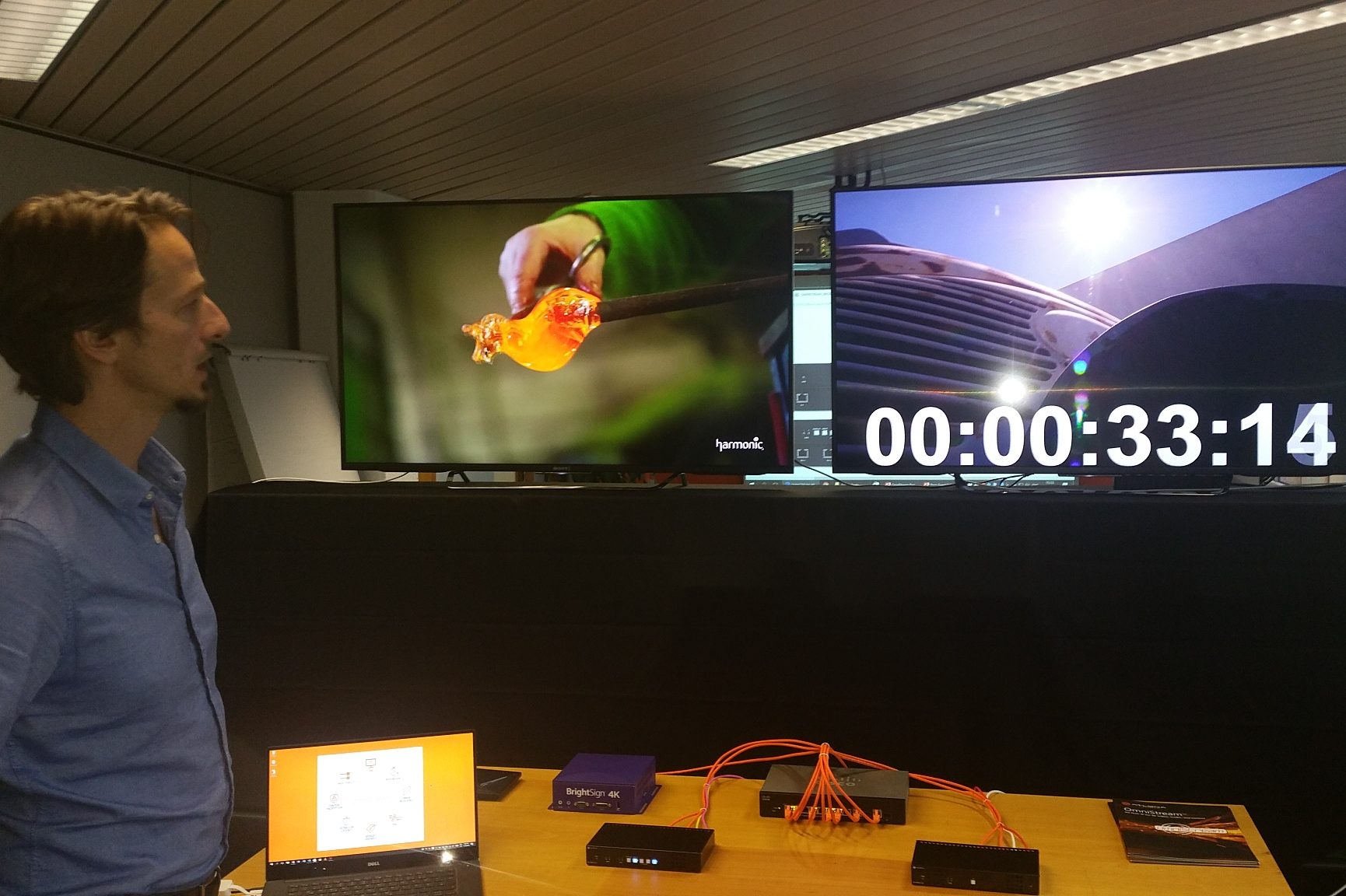
Paddy Baker visits Atlona’s European HQ to see a demonstration of the company’s virtual matrix technology, which runs over Gigabit networks.
For Atlona, using IP networks for video is a logical progression – it’s the next on the list after data, voice and audio, which are already well established in these environments. IP video, meanwhile, is used in some specialised applications such as hotel IPTV and networked CCTV, but has not yet gained a substantial foothold into the commercial AV market.
Advantages offered by video over IP include scalability and future-proofing, so a system can expand as the need for it increases without having to jettison old equipment; and reduced capital expenditure, because it uses standardised IT networking equipment and can often share the existing infrastructure.
Running on Gigabit networks, using industry-standard switches, Omnistream can be thought of as a ‘virtual matrix’. The range is targeted at applications including corporate, government, education and military environments. It can be used to send signals around a large room, from room to room, floor to floor or even building to building on a LAN. (It is not intended for WAN use.) It uses the VC-2 HQ codec, which provides light compression with very low latency; uncompressed video would travel faster, but would not provide such a scalable solution.
Another key advantage of Omnistream is its dual-channel design. Encoders and decoders that can handle two channels in parallel not only reduce the overall cost per channel, they can also be used to provide redundancy of signal and also power (since Omnistream supports power over Ethernet).
Straightforward set-up
In November, I travelled to Atlona’s European headquarters in Zurich for a demonstration of Omnistream.
The set-up was a straightforward one: two sources – a Brightsign digital signage player and a laptop were connected via HDMI to a dual-channel encoder; two Cat5e network cables connected this to a Cisco ST300 switch – a 10-port Gigabit PoE model costing less than €300, according to Reto Spörri, senior sales engineer AVoIP. This arrangement was mirrored on the output side: two network cables to a dual-channel decoder, and HDMI to two displays mounted side by side.
We watched some video of scenes of Venice – relatively slowly moving images, but with a lot of detail – delivered from the Brightsign player and the laptop through the Omnistream set-up. These were H.265 4K (3840 x 2160), 30fps, 8-bit, 4:4:4 – and looked good. There were a few slight compression artifacts (colour banding and flicker) that Spörri assured me were the result of the H.265 compression, not the Omnistream processing.
To gauge the system’s performance with data, we looked at an Excel spreadsheet from the laptop. This wasn’t as impressive as the video – coloured backgrounds and coloured text were not as sharp as one might have liked. “I think it’s usable even though it’s not perfect,” Spörri said – a judgement I agreed with.
I then watched a latency test. In addition to the equipment already described, there was an HDMI matrix under the table that sent one source direct to the screen, the other via the decoder-encoder set-up. Spörri challenged me to say which display was showing which signal. Looking from one display to the other, it wasn’t possible to detect any lag between them, so I took a photo with my phone and scrutinised it. The last two digits of the timecode on each showed a transition from frame 27 to frame 28 – but the 7 was more prominent on the left and the 8 slightly stronger on the right. So the Omnistream signal was on the left-hand display, but the latency was much less than a frame – and seemed in line with the 9ms figure that Spörri quoted me earlier.
Redundancy
He then demonstrated Omnistream’s redundancy features. The behaviour of each encoder can be set via its web interface using Atlona’s AMS software: Spörri used this to set both output channels to the primary source, so the back-up source (which was sending identical content) was not being displayed. When he pulled out the cable from the primary source, the screen went blank for a couple of seconds, and then the video re-appeared. He then reinserted the primary source cable and pulled out the back-up source cable; because the back-up was still being shown, the screens went blank again until the primary source appeared a couple of seconds later.
Spörri explained that signal priorities can be set using the AMS software: for instance, the user can decide whether the encoder should revert to outputting the primary signal as soon as it is re-established, or whether it is preferable to keep showing the back-up signal without another interruption.
Overall, I was impressed by Omnistream – the compression is very efficient and visually lossless, and seems a small price to pay to enable the use of Gigabit networks. Redundancy is handled very neatly, too.
The range currently comprises five SKUs: two encoders (single- and dual-channel), two decoders (ditto) and a dual-channel Dante-networked audio interface. Its European debut – featuring a later software version than I was shown here – will be at ISE 2017, and it will be available from February.







